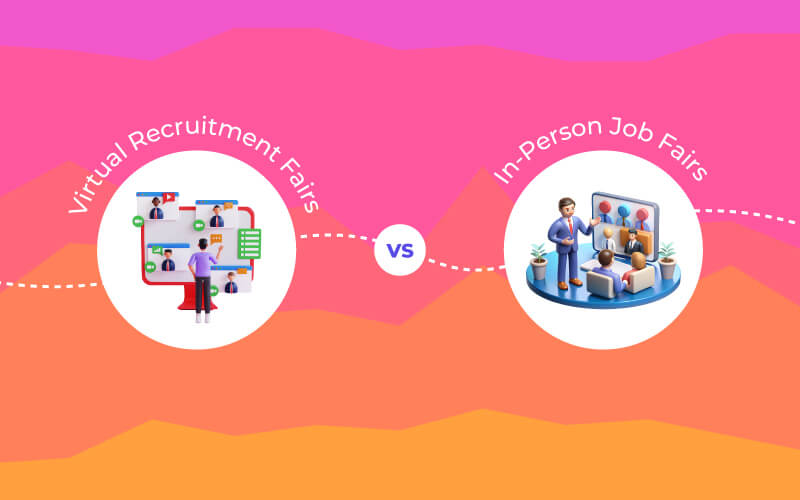Running a company is like managing a big team. Just like any team, clear communication and good decisions are key to success. That’s where company meetings come in! These gatherings aren’t just boring number-crunching sessions – they’re vital for keeping everyone on the same page and driving the company forward.
However, three major gatherings form the backbone of any organization/company; Annual General Meetings (AGMs), Extraordinary General Meetings (EGMs), and Board Meetings. AGMs primarily address ordinary and, if necessary, special company matters, EGMs focus on discussing specific business issues requiring immediate attention.
All gatherings involve company stakeholders coming together, understanding the distinct roles and functionalities of each is crucial for smooth operations and informed participation. In this blog post, we will delve into three major types of general meetings. So without further ado, let’s start:
What is an Annual General Meeting (AGM)?
The Annual General Meeting (AGM) is a yearly company event where shareholders and company representatives come together to discuss the company’s performance, finances, and plans. Consider AGM as the company’s yearly report card presentation.

Moreover, It’s like a team meeting for a giant company! Shareholders, the people who own parts of the company, get a chance to see and analyze the company’s financial report card. Shareholders cast a vote on important decisions such as who will be on the leadership team, and ask questions about the company’s direction. This annual gathering ensures transparency and accountability by keeping everyone on the same page and working towards the company’s success.
An AGM typically consists of the following:
- Financial Transparency: The company provides audited financial accounts and reports for the previous year. This enables shareholders to evaluate the company’s financial health and performance.
- Resolutions and Approvals: Each shareholder votes on the board’s resolutions that may deal with dividend distribution, board nominations or reappointments, or major agreements.
- Election Time: Companies offer shareholders the opportunity to elect and reelect board members. This ensures that the board stays accountable to shareholders, who are ultimately its owners.
- Open Forum: Shareholders have a defined forum to express their concerns, ask questions, and engage in discourse with the company’s management. This promotes openness and helps resolve any shareholder concerns.
What is an Extraordinary General Meeting (EGM)?
To understand EGM better, think of a company as a busy team that is constantly working to achieve its goal. But in most cases, companies don’t have weekly meetings. They have an annual meeting, the Annual General Meeting (AGM). But have you ever thought about what happens when something urgent comes up that can’t wait until the next AGM? This is where extraordinary general meetings come into play – special team meetings to deal with unexpected situations.
In simple terms, we can say; EGMs are mostly convened to address critical matters that concern the administration of the company. It requires immediate attention and the consent of its members (shareholders).
Here’s why a company might call an EGM:
- Time-Sensitive Decisions: Perhaps the company needs to approve a sudden merger with another company, but waiting for the AGM could mean missing a crucial opportunity.
- Rulebook Revisions: The company’s core rules, outlined in its articles of association, might need an urgent update. An EGM ensures everyone agrees to the changes.
- Capital Considerations: The company might need to hold an EGM to secure shareholder approval if additional capital is needed through share issuance.
- Leadership Shifts: When a member of the leadership team fails to perform well, an EGM may be called to remove them.
Several parties can initiate an EGM:
- The Board: The board of directors, the company’s guiding force, can call an EGM whenever they deem it necessary.
- Shareholder Action: If a significant number of shareholders feel an issue requires immediate attention, they can submit a requisition to the board requesting an EGM.
- Tribunal Intervention: In exceptional circumstances, if the board doesn’t respond to a valid shareholder requisition or a meeting can’t be held, a tribunal (a legal body) might order an EGM.
By having EGMs, companies ensure they can address unforeseen situations swiftly and democratically, keeping everyone involved and informed.
Key Differences Between AGMs and EGMs:
There are several key differences between AGMs and EGMs, as summarized in the following table:
| Features | Annual General Meeting (AGM) | Extraordinary General Meeting (EGM) |
Frequency | Once a year | As and when required |
| Meaning | An Annual General Meeting (AGM) is the general meeting which must be held by the company every year, to discuss various business matters. | An Extraordinary General Meeting (EGM) is any meeting other than the AGM in which business relating to company’s management are transacted. |
| Purpose | Regular reporting and approvals | Urgent or unforeseen matters |
| Planning | Scheduled well in advance | Can be called at short notice |
| Topics | Routine business | Exceptional circumstances |
| Convened by | Board | Board, Board on requisition of shareholders, requisitionist or tribunal. |
| Business | Ordinary business and special business (if any) is transacted. | Special business only. |
| Day and Time | It can be held on any day excluding national holiday, in business hours only. | It can be held on any day including national holiday, and any time during a day. |
| Penalty | When meeting is not summoned within the stipulated time, penalty is levied. | No penalty is prescribed as per law. |
| Penal Provision | In case a company fails to hold the AGM, every officer concerned in this matter shall be fined up to ₹ 1,00,000. | If the director fails to hold this meeting on requisition, the act allows the requisitionists to hold the meeting and recover the expenses incurred in holding such a meeting. |
| Provision applicable | Provisions of Section 96 of the Companies Act, 2013 are applicable. | Provisions of Section 100 of the Companies Act, 2013 are applicable. |
How do Board Meetings Differ from AGM and EGM Gathering?
Board meetings are the ones that occur when a company’s directors meet to discuss key issues. Within 30 days of formation, you must schedule the meetings, ensuring that the first meeting occurs within the initial 30 days of incorporation. There must be a minimum of four board meetings every year, separated by a minimum of 120 days. Furthermore, a meeting requires the presence of at least two directors or one-third of the directors. If a meeting cannot occur, it will be rescheduled for the same time and place the following week. Moreover, these meetings are not open to the general public or shareholders.
What happens in a board meeting?
- Strategic Discussions: Board members discuss and develop methods for achieving the company’s long-term vision and strategy.
- Operational Scrutiny: Board members assess the company’s performance against predetermined goals, examine operational data, and suggest areas for improvement.
- Decision Making: The board makes key corporate choices about investments, resource allocation, and risk management after complete deliberation.
Choosing the Right Platform for Modern Gatherings:
To make the annual general meetings streamlined the companies need to opt for a virtual event platform or video conferencing solutions. These are the considerations and tools that offer numerous benefits:
Event Registration Made Easy:
Gone are the days of managing mountains of paper registration forms. Here comes the extraordinary general meeting platforms, they offer features to streamline registration for both shareholders and directors. They can register through the platform’s web interface or mobile app, receive reminders, and access meeting details with ease. Think of it like online event registration – a smooth and organized process for everyone involved.

Security You Can Trust:
Security is paramount when dealing with sensitive company information. Virtual platforms prioritize this by using robust encryption protocols, multi-factor authentication, and data encryption. Additionally, leveraging an online vault for your company’s data can provide participants with peace of mind, knowing their information is protected.
Voting Goes Digital and Streamlined:
Say goodbye to paper ballots and tedious manual counting. Annual general meeting platforms offer electronic voting through user-friendly mobile apps or web interfaces. This makes voting faster, more secure, and reduces the risk of errors.
Boosting Engagement Beyond Attendance:
Virtual platforms go beyond just attending the meeting – they encourage active participation! These platforms offer live polls, Q&A sessions, and interactive chat features accessible on both desktops and mobile devices allowing shareholders to engage in real-time discussions and provide valuable feedback. Picture a virtual town hall where everyone can participate actively and have their voices heard!
Recordings for Future Reference:
These platforms provide access to meetings. These meetings even can be recorded and archived for future reference. However, both desktop and mobile users can access recordings to review discussions and decisions made during the AGM. This ensures transparency and accountability – a clear record of everything that transpired at the meeting is readily available.
Mobile App Convenience at Your Fingertips:
Many virtual general meeting platforms offer special mobile apps that complement the main platform. Shareholders can access the app to access meeting information or content, participate in discussions, and vote directly from their mobiles. This offers more flexibility – take part in the annual general meeting as you can be part of the meeting from the comfort of your sofa or on the move!

Cost-Effective Meetings:
Holding virtual AGMs eliminates the need for expensive venues and travel costs for attendees. This translates to significant savings for companies, allowing them to allocate resources more efficiently. Think of it like hosting a meeting without the hefty price tag – more resources available for other important initiatives!
By leveraging these features, companies can choose the right AGM platform like Dreamcast with mobile app integration and event registration functionalities. This allows them to host successful, engaging, and efficient AGMs and EGMs in today’s tech-driven world!
Conclusion:
Understanding the objective and distinguishing features of AGMs, EGMs, and Board Meetings is essential to successful corporate governance. Shareholders may engage more meaningfully in AGMs and EGMs, while board members can make informed choices based on strategic discussions held during board meetings. However, companies who prefers cutting-edge virtual event platforms and video conferencing methods can enhance communication, involvement, and transparency inside their organizational structures.







